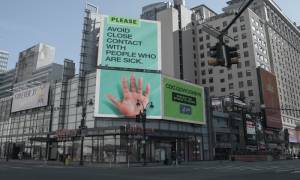Why Free College Education Could Well Be a Tearjerker

The Democrats keep talking about making college free for students. According to the New York Times, it would cost taxpayers around $79 billion a year. The article goes on to state that it’s a “humane investment.”
I disagree. It’s certainly a utopian ideal for everyone to be able to afford to go to college. In a perfect world, everyone would be able to study, no one would struggle to find a job, and everyone would get along.
In the real world, it just doesn’t work that way. You can sit around the campfire and sing Kumbaya all your like—it’s not going to make the world a fair place. In fact, are you not doing these kids a disservice by presenting them with this easy solution?
Kids today get participation trophies so that no one has to feel the pain of losing. How exactly does that prepare them for the working world? Now we’re supposed to hand them a college education on a platter as well?
I Speak from Personal Experience
When I left school, there wasn’t money to go to college. My mother was a widow. She could have swung the payments on a student loan, but it would’ve been hard for her. I decided to step up and get a job.
So, I worked full-time and studied toward my honors degree part-time. It was difficult, but, in the meantime, I was getting valuable work experience. While my fellow school leavers were finishing up their degrees, I was finishing up an accelerated managerial training program at work.
It took me longer to get my degree, but the company paid for some of the courses. Some of my schoolmates were scathing because I didn’t attend college. Within six years of leaving high school, I held a position of authority, had valuable work experience, and not a cent of student debt.
Guess who was laughing then.
The most valuable lessons I learned? I learned a great work ethic that’s stood me in great stead. I also learned that there’s always a workaround if you’re willing to work hard.
The Value of a Free Education
Another thing that I learned was the value of education. So, it’s great to note that 36.6% of American women had a college degree in 2019, compared to just 3.8% in 1940.
That being said:
How much would I have valued that education if it had been handed to me? Here I want to draw on a cautionary tale from the third-world.
South Africa, at one time, one of the most prosperous countries in Africa, is crumbling under the strain of corruption and unrealistic voter expectations. The government, much like ours, provides free primary education.
Unlike ours, the South African government promised school leavers of reduced means a free college and university education. Over the last few years, though, it hasn’t delivered. Now, keep in mind that most universities in the country are privately run institutions.
If they try to exclude students with historical debt, the students protest. How do they do so? By burning down buildings at those institutions. Recently, a student mob even attacked a professor.
Now, before you say we can’t draw parallels to a third-world country, think about this for a second. Those students have been benefiting from a range of free education programs for several years now. By their actions, they show how little they appreciate their education.
Another Point to Consider
Here’s something else to consider. Now, some will find me heartless for saying this, but when does the parent’s responsibility kick in? Children can access free public education in this country.
Whether you think that the public education system is flawed or not, every American child can potentially access free education up to the age of 16. With some states, this extends to grade 12.
Now we’re supposed to foot the bill for an extra four years of education? What’s next? Are taxpayers responsible for handing them a job afterward, too? When does the state’s responsibility end? When do parents take over?
In-state education in states like California costs $1,430 for a two-year course. According to Business Insider, the average family spends about $1,979 on a summer vacation.
Now granted, that’s not even going to come close to the cost of an Ivy League school, but it can get you into a reasonable public school. Maybe it’s time to start managing our expectations for our children or start socking away more money to pay for their education.
It’s Not a Simple Issue
We’re not looking at something as simple as giving each child equal access to opportunities. If we were, it would be simple to throw money at the problem. Pell grants alone cost the federal government $28.2 billion in 2018/2019.
That’s only a drop in the ocean when you consider other federal and state programs. If giving out more free education is the answer, why are we still battling so much with this issue? Shouldn’t we work on improving the primary education system first?
Maybe it’s time to take a firmer stance. We need to make prospective students understand that there are no free rides. Is it entirely fair? No, but then, neither is life. It’s time we faced up to the fact and dealt with that.








![Understanding Business Insurance Policies: Key Terms and Definitions [node:title]](/sites/default/files/styles/front_featured__front_/public/business-insurance.jpeg?itok=ErsVEJiG)

![The True Cost of Business Break-Ins [node:title]](/sites/default/files/styles/front_featured__front_/public/hands-gloves-break-in-business-costs.jpeg?itok=p9V6IKqi)

























![The Benefits of Coolsculpting Procedures for Fat Reduction [node:title]](/sites/default/files/styles/video_thumbnail_bottom/public/man-hand-holding-tummy-body-fat.jpeg?itok=QrJspN6u)

